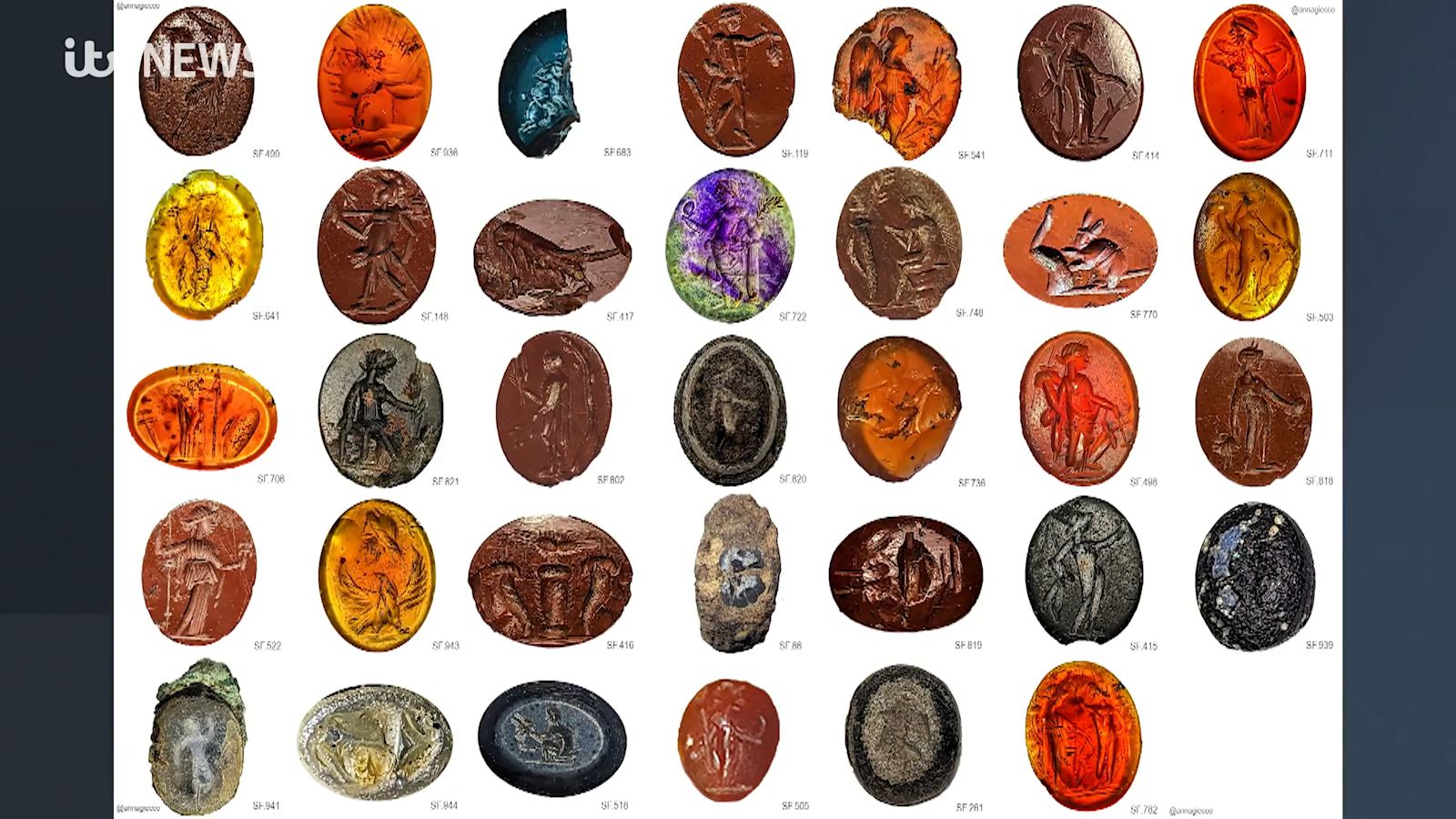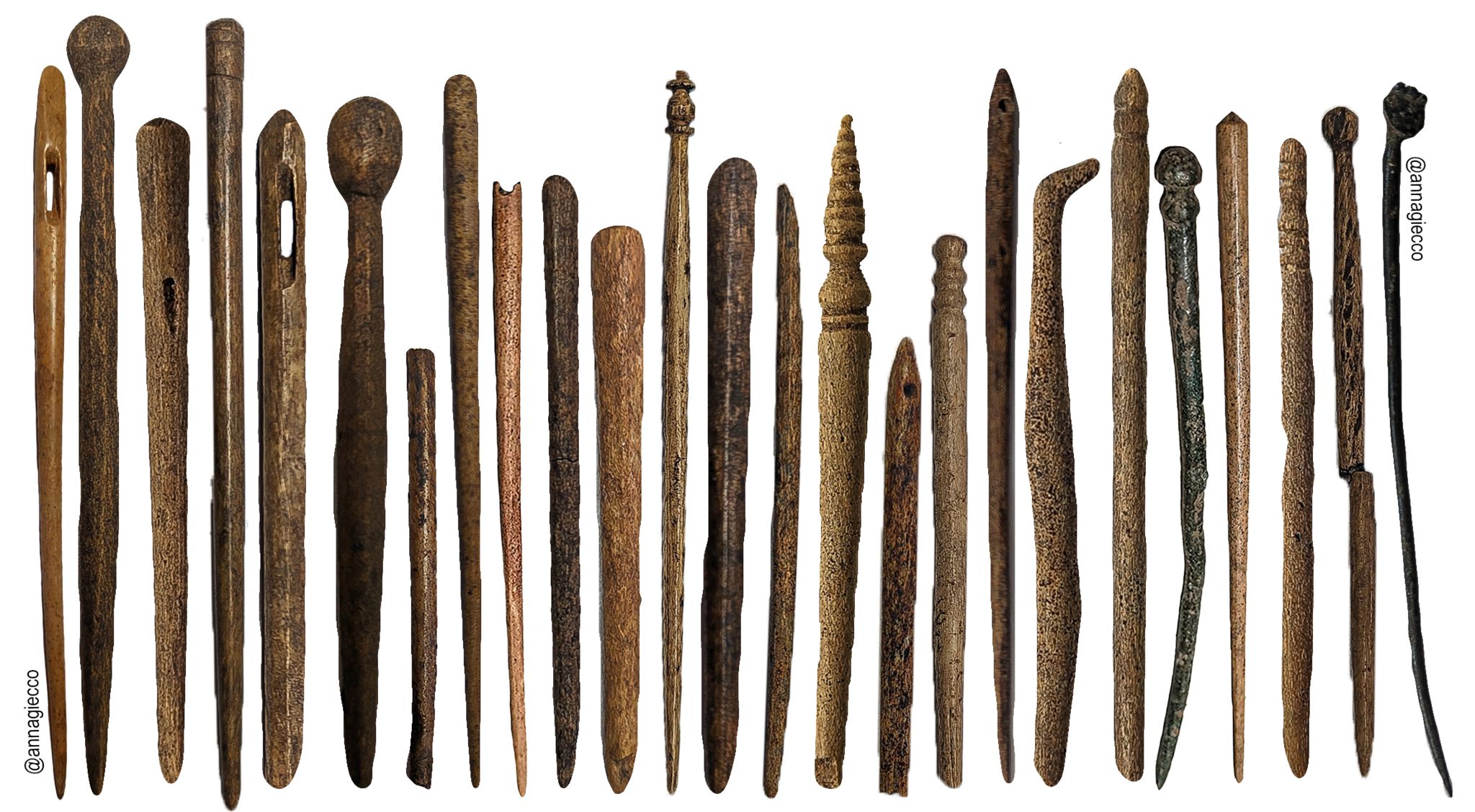Uncovering Roman Carlisle, 2024 Season.
Nick Henderson and Anna Giecco.

Nick prefaced their talk by explaining that they had already passed on information about what had been discovered by their team to over 1,200 people. He then asked the audience if anyone had volunteered to work or just visited the site, this being what remains of Carlisle Roman Bath House now a joint project between Wardell Armstrong, Tullie House, Cumberland Council and Carlisle Cricket Club.
In Roman times there were at least 10,000 soldiers stationed on Hadrian’s Wall and Carlisle was the only city situated on it. There were two forts built at the time, one to the east and one to the south to protect the city. In 2017 the cricket pavilion was badly flooded and the club decided to relocate it to higher ground. It was that whilst digging the foundations for the new pavilion amazing discoveries began to appear. First of all, a stone with a dedication to the empress Julia Donna dated 210AD and a series of tile stacks which were used in underfloor heating system in a Roman bath house. There was also a direct connection to the imperial families around The Severan Dynasty who came to power in 193AD.
A project was then launched in 2019. Covid delayed this this but it was then restarted as a community project in 2021. The main aims were to deliver community and economic benefits whilst creating activities and attractions for residents and visitors. As a consequence of the dig there has already been four major exhibitions displaying the finds. Uncovering Roman Carlisle seeks to enhance participants’ wellbeing, create a community and provide opportunities to participate in archaeology and heritage. It has so far provided over 4,000 volunteer places and 16,000 site visitors which include people from over 40 countries.
The highlights of finds so far include the largest known building on Hadrian’s Wall which contained an inscription to Severus’s wife, Empress Julia Domna (bAD160-dAD217) or to another Severan matriarch, also called Julia. Other finds include 74 magnificently carved intaglios, largest collection from any single context in the UK. Intaglios are carved gemstones which would have been worn in finger rings; they had both symbolic and practical uses, the main being as a wax seal. Two monumental carved sandstone Roman heads were found and which are utterly unique, being the only example of Tyrian Purple in Northern Europe. The purple pigment was used in painting frescos and artworks in prestigious buildings.
When investigations first began on this site it was started by digging three revaluation trenches. The first two revealed nothing but the third at the northern part of the site gave remains of a wall. By following this wall, it was discovered that the size of the bathhouse was originally over 150 feet by almost 200 feet. Underground Roman drains have also been found. One of the volunteers who found a glass bead commented: “This was my first ever Roman find – a piece of blue glass, it made time stop…to realise that I was the first person to touch it since a Roman dropped it”.
Anna then showed an aerial photograph of the site with part of the underground drain exposed. Here there are signs that the drain had been rebuilt because of the type of mortar used. She estimated that this probably took place in the fourth century. In another trench on the photograph was part of a mausoleum: here, evidence of cremated bodies was found. It is hoped further investigations would take place next year. Other finds in this area include large pot vessels used to transport olive oil or wine called amphorae. Some are almost intact. A large flagon which would have been used in a cremation burial was also shown. Since the dig started over 4,000 pieces of pottery have been discovered.

Nick and Anna then went on to talk about the finds. Firstly, two large stone carvings of human heads, both over two feet tall. It is thought that the heads represent theatre masks and would have be\2018en placed above the theatre door looking down upon the entering audience. Similar masks had previously been discovered in York. Other stone heads include a dolphin which may have been used in a fountain. A carving depicting woman’s head also found is still waiting for expert examination.
A number of discs have also been discovered which have been carved with both symbols and letters, these possibly being peoples initials. Next were two bronze brooches which had been brightly painted. A selection of gaming counters along with a dice were shown with a selection of coins in various designs. Over 150 coins have been discovered which is the largest number found from one site in Britain. The oldest coin found on the site dates from 82BC which pre-dates the Roman Empire but others are much later and dating from Napoleonic times.

Pins and needles were also shown, suggesting that textile works had been in progress. This collection also included hair pins. In areas where finds could be discovered, the soil and gravel were gathered in large buckets. These buckets are emptied and examined three times before being discarded. It is thought that Carlisle had its own school of engravers because some of the symbols discovered only appear in this area. Anna then showed a slide which contained all 74 intaglios found all of which had unique carvings.
Nick and Anna ended their most interesting talk by explaining the emotions of the people who have volunteered in the past. They remembered three expressions of these in particular…
I remember this coming up from the trench wet from the rain and covered in red mud. Seeing the print of the toes on that wet clay brought home the human side of the construction of the bathhouse.
I found two tiles with the IMP stamp on in a stack. They clearly showed a connection between the bathhouse and the emperor. It is amazing to find these in Carlisle.
After a few days of digging you learn to temper the anticipation, but my heart skipped a beat as I carefully (but not professionally) cleared away more soil and held up my find. I nervously handed it over to the supervisor who smiled broadly and said: ' That’s very nice ' !
For the project to continue, it also needs to ensure it maintains and builds on the support it has been given so far by a network of organisations and individuals. Certainly, our two speakers this evening conveyed enthusiasm and support for this whole enterprise. They gave us news of projects to come inspired by present work and fulsome explanations. The breadth and details of these were both comprehensive and inspiring.
Tricia Jagger.